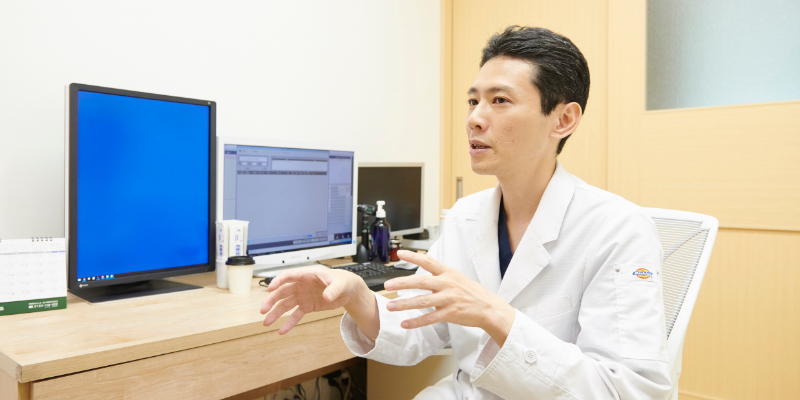- TOP
- For Doctor
- Electronic Medical Record: Doctor’s Report
- Kamiya General Practice

Kamiya General Practice
Interviewee: Dr. Shinichi SugawaraOno-machi, Tamura-gun, Fukushima Prefecture/General Practice/Pediatrics
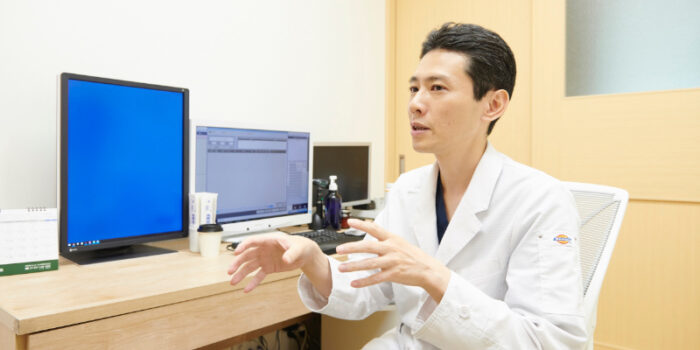
Automated Electronic Medical Records and Drug Dispensing A Big Job that can be Done by a Small Team
Dr. Shinichi Sugawara, a pediatrician and general physician, writes prescriptions from his clinic in Ono-machi, Tamura-gun in Fukushima Prefecture.
We asked him about his commitment to automating even the dispensing of drugs by linking electronic medical records and our dispensing machines to his system.
※At the time, you implemented BrainBox VⅢ, but have since upgraded to BrainBox V-Ⅳ with the opportunity of a system replacement.
First of all, we would like to ask you about this building. It has a very distinctive design! Is there any part of it that you like in particular?
I like the atmosphere of 1950s and 60s America, so I spoke with an architect and asked them to use mid-century design as a basis, like that seen in an American country house.


I can really feel the attention to detail, not only from the exterior, but also from this very sophisticated interior.
Thank you. We actually decided on the design ourselves, without the help of an interior designer. We tried to create a warm, home-like atmosphere, as opposed to what you might find in a typical hospital.
Each desk and sofa in the waiting room is decorated with a real sense of warmth.
I also noticed you sell supplements and vitamins from the reception desk. Is there a particular reason for that?
That’s because we want to help with areas that are difficult to get covered by health insurance by offering supplements and other products.
Some supplements are actually very effective and are used as part of high-concentration vitamin C infusion therapy or nutritional therapy, so some patients who feel unwell despite receiving normal blood tests and imaging studies might still improve with their use.
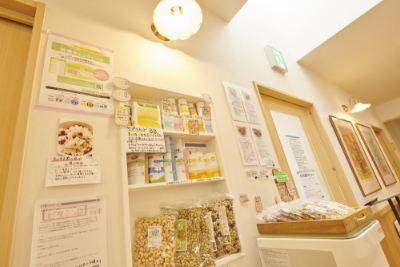
Your offering of supplements at certainly reflects that. You are currently using our electronic medical records. How did you find out about our products?
I was looking at various materials in the process of choosing a replacement electronic medical record system and saw a user report (BrainBoxVII) from Yuyama. I was especially interested in the report* from Dr. Akahori and their Taishibashi Clinic, as I thought it would be great if ours could also automate its processes, including drug dispensing, in order to save on labor costs.
※(Automating systems by connecting Electronic Medical Record BrainBoxVII and Litrea Fully Automated Tablet Packaging Machine, and operating using a small team)
We’re delighted to hear you found Dr. Akahori’s insights helpful! Would you mind telling us what the final deciding factors were that led to choosing our electronic medical records?
We were using a different company’s electronic medical records system prior to changing location. This is a small detail, but when using SOAP format, not being able to drag and drop the information we had added between categories S and O was inconvenient, as was the case with other companies’ software. I think BrainBoxVIII is an improvement because it is flexible in terms of rearranging and organizing information.
How are you finding actually using the system after it was introduced?
I think it’s good. There was a time when we used other companies’ integrated models and free electronic medical records to assist with our work, so this is not a comparison, but BrainBoxVIII has been very helpful, not only for its medical examination function, but also for showing managerial figures almost immediately. Frequently used items being pre-arranged in the medical examination function, and their locations being easy to navigate and operate is another benefit. The screen itself is easy to read, and it is nice that settings that are likely to be used frequently, such as the medical examination settings, are prepared in advance. Being able to customize setting registration and form creation to some extent is also a nice bonus.
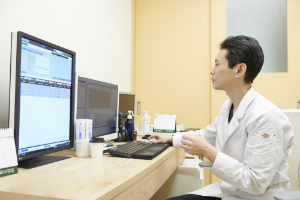
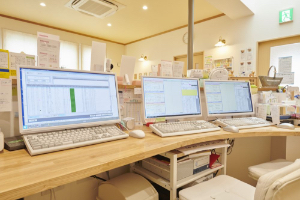
We’re happy to hear you’ve found the electronic medical records to be easy to use!
You mentioned the quickly being able to see your managerial figures—would you mind going into a little more detail into what kind of figures, specifically?
Statistical figures. It is nice to be able to quickly display monthly patient counts, new patient counts, annual sales, and percentage of generic medicines used.
I see, thank you. How have you found the usability of the MDbank Medical Database (MDbank) that is included as standard?
I think it’s easy to use, and having images of the medicines is particularly nice. The patient can be shown the images while their medication is being explained to them. There are electronic medical records that include the databases of other companies’ drugs, but I think MDbank is easier to use and having our own drug database as a standard feature is an advantage.
Thank you very much. Now I would like to ask you more about the dispensing automation you mentioned at the beginning. In addition to BrainBoxVIII, you have also introduced our dispensing robots and equipment (MiniDimeRo, miniAQUA, charty-ⅢUC5 + 45 tablet cassettes) to your system. Can you tell us why?
After reading Dr. Akahori’s user report, we were attracted to the fact that Yuyama’s electronic medical records and dispensing machines could be linked to the same system. Although it isn’t a fully integrated system, I thought it would be less risky to use the same manufacturer for both our electronic medical records and dispensing equipment.
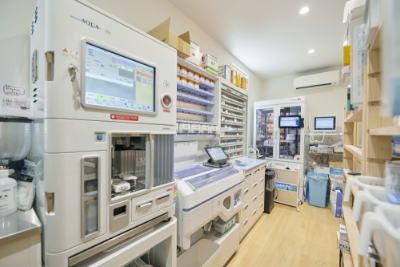
Selling both electronic medical records and dispensing equipment is definitely Yuyama’s strength. Were there any other major deciding factors in your decision to introduce the system?
It had to be the MiniDimeRo Powder Drug Dispensing Robot. We wanted to consolidate these powdered medicines into a single package, so being able to prescribe medicines using a machine and subsequently eliminate the risk of human error was a big deciding factor for us. The low running cost of the miniAQUA Liquid Medicine Dispensing Machine was also nice.
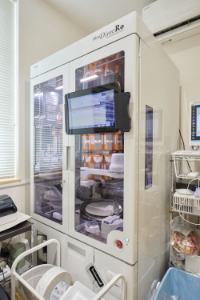
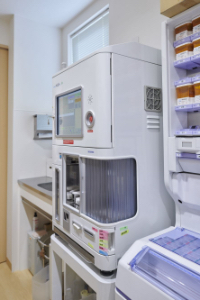
We were told that when selecting dispensing equipment, you personally visited our Tokyo showroom to see the equipment for yourself.
The showroom has the full line of equipment, so you can see what’s new and what’s popular. Being able to see and try the actual equipment in person was another major contribution to our decision.
You also use the charty-III Ultra-Compact Dividing Packaging Machine (UC5 + 45 Tablet Cassettes), is that right?
We dispense prescriptions that cannot be completed by MiniDimeRo and also package sets of supplements tailored to the patient’s needs. Yuyama’s Universal Cassette (UC) is especially useful for dispensing tablets that are not available in fixed cassettes without the need to do so by hand. Supplements are available in a large variety of types and sizes, so being able to combine them according to individual needs is fantastic.
I believe there are only a few clinics in Japan that have installed the MiniDimeRo dispensing robot. Have there been any reactions from the other doctors you know?
There are almost no doctors who know about it because it’s rarely publicized. However, I think that all doctors who dispense drugs from within their clinic and prescribe many powdered medicines would like to use a dispensing robot that can assist. I think cost may be a big reason for those who have not yet introduced this system into their own clinics.
I see, so you decided the benefits outweighed the costs and introduced the power drug dispensing robot?
Dr. Sugawara: Absolutely. Knowing that the machine wouldn’t make mistakes was a big reason. Human error is always a possibility where personnel are involved. In fact, we often hear staff members say they worry about making mistakes, so we would like to automate the dispensing of medicine as much as possible to eliminate the risk of human error.
You have introduced our YUNiCOM-DSx Dispensing Support System and have automated it by linking BrainBoxVIII to it. May I ask how you feel about its use in practice?
Dr. Sugawara: The system is operating without any problems at all and the ability to set detailed bylaws has been very helpful. Automating the processes has also reduced the need for human labor. Since many of the prescriptions we write are for powdered medicine, letting the machine take care of dispensing them means I don’t need to worry about any powder getting loose or flying into the air. The wellbeing of my staff is a priority for me.
How about the time required to complete dispensing?
Dr. Sugawara: I think it is significantly faster. I don’t know if including the entire process up to the accounting work has led to an overall speedup, but the process leading up to the drugs being dispensed is clearly faster.
Thank you very much. Have you thought about how your clinic will continue to save on labor costs in the future?
We were considering systems and equipment that help enable operations using a small team. For example, if the need arises, I, myself, could operate the system (YUNiCOM-DSx Dispensing Support System) and dispense drugs, or use a web application for medical questionnaires, or introduce RPA*, etc. I think we can still save labor, so I would like to continue finding ways to do so while still taking cost into consideration.
※RPA (Robotic Process Automation) is an initiative that uses cognitive technologies (rule engines, machine learning, artificial intelligence, etc.) to substitute or replace tasks that were previously assumed to be only handleable by humans.
So, there are still areas where you are looking to reduce time and labor. Well, thank you very much for your time today.
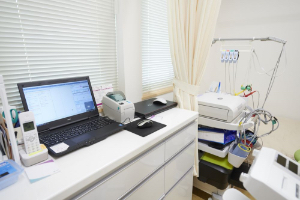
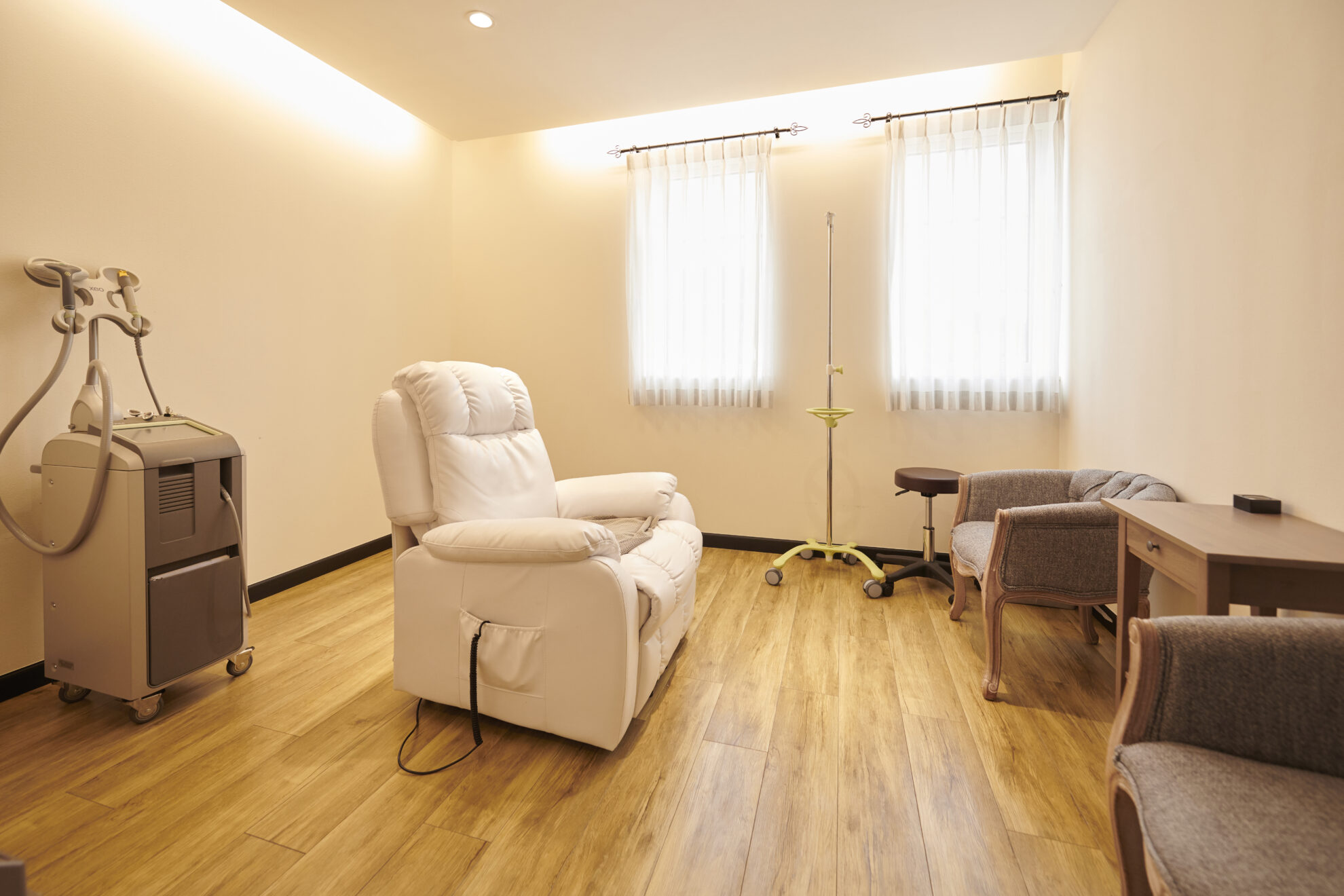
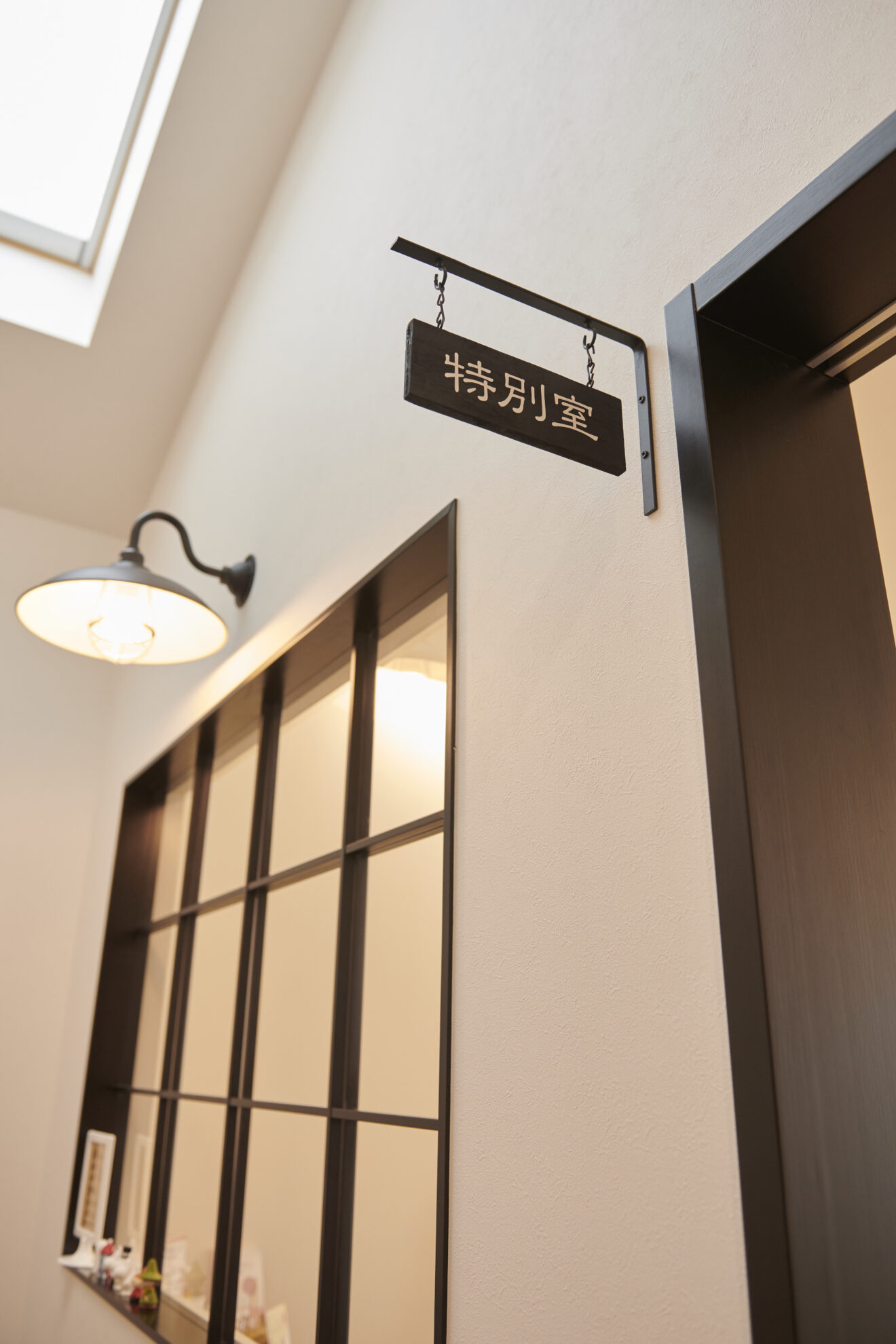
Clinic Profile
Ono-machi, Tamura-gun in Fukushima Prefecture is known as the birthplace of lyricist Toshio Oka and home to the Rica-chan Castle. Passing through the town reveals a clinic with a mid-century design and a particular attention to detail. Dr. Sugawara is promoting the automation of drug dispensing by utilizing the strengths of machines and systems, while also suggesting wellness supplements at their reception counter. This interview was filled with the doctor’s unique persistence in every aspect.
Information as of July 2019
